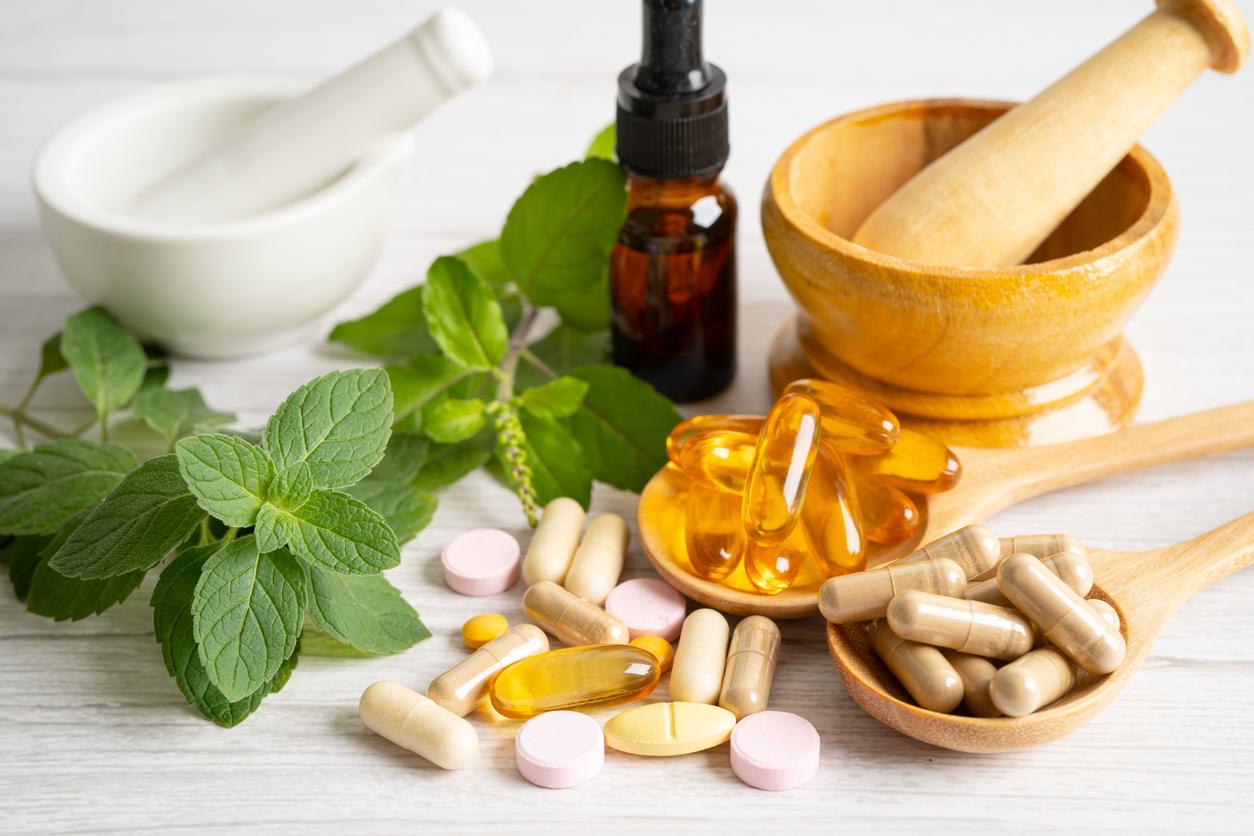- What is Vitamin B5?
- What are the benefits and indications of vitamin B5?
- Where to find vitamin B5 in food?
- What are the recommended vitamin B5 intakes?
- What are the symptoms of vitamin B5 deficiency?
- What are the risks in case of vitamin B5 overdose?
What is Vitamin B5?
Vitamin B5 or pantothenic acid is, like vitamin C, a water-soluble vitamin. It is not stored in the body and is eliminated quickly through the urine. A daily intake is therefore necessary to meet the needs of the human body. This vitamin is formed by the combination of beta-alanine and pantothenic acid. It is essential for the body since it is a precursor of coenzyme A (molecule which notably allows the body to produce energy, but also to synthesize and oxidize fats). Vitamin B5 is therefore involved in many metabolic reactions.
What are the benefits and indications of vitamin B5?
Vitamin B5 and its benefits for the body have been known for a long time. Pantothenic acid plays an essential role for the body since it is essential for the transport of oxygen in the blood, the regulation of neurotransmitters, the production of energy at the cellular level, the functioning of the adrenal glands as well as the synthesis of cholesterol, but also fatty acids and sex hormones. Vitamin B5 thus participates in the functioning of many vital metabolic processes.
According to European health authorities, food supplements enriched with vitamin B5 can thus claim to contribute to normal energy metabolism, to the normal functioning of intellectual capacities, to fatigue reduction or the synthesis of thyroid hormones, but also vitamin D and neurotransmitters. However, these products must contain at least 0.9 mg of vitamin B5 per 100 g or 100 ml in order to display these claims.
Vitamin B5 is also used for the beauty of skin and hair. For this use, it can be consumed in the form of food supplements or cosmetic products to apply directly to skin, nails or hair. Pantothenic acid is renowned for its regenerating and restorative properties. Vitamin B5 thus contributes to the renewal, repair and growth of cells in the skin, mucous membranes and hair. It can therefore be used to promote the healing of the skin, in anti-aging and anti-wrinkle care or even in care for weakened skin for its anti-inflammatory action. It also helps soothe irritated scalps and strengthen and shine hair.
Where to find vitamin B5 in food?
Vitamin B5 is both produced by the intestinal flora and provided by food. Foods rich in vitamin B5 are especially brewer’s yeast, offal (liver of poultry, beef, lamb, pork, etc.) and calf kidneys. It is also possible to find vitamin B5 in:
- whole-grain breakfast cereals;
- Royal jelly ;
- shiitake mushrooms;
- cooked egg yolk;
- Milk ;
- lentils;
- trout and salmon;
- wheat germ;
- Crottin de Chavignol cheese;
- peanuts and cashews.
Vitamin B5 is present in many everyday foods. A balanced and varied diet thus makes it possible to meet all of the body’s needs. The deficiency is therefore quite rare, so it is generally not necessary to take pantothenic acid supplementation, unless otherwise advised by a doctor.
What are the recommended vitamin B5 intakes?
The recommended intakes of vitamin B5 for adolescents over 16 and adults are approximately 5 mg per day for women and 6 mg per day for men. For infants, a daily intake of 2 mg is recommended, it increases to 2.5 mg/day for children from 1 to 3 years old then to 3 mg on average for children up to 9 years old. In case of vitamin B5 deficiency, it is possible to find food supplements in pharmacies. Before starting to take, however, it is advisable to ask a doctor for advice. As for the dosage of vitamin B5, it depends on the age of the patient and his needs, the advice of a pharmacist or a doctor is also recommended.
What are the symptoms of vitamin B5 deficiency?
Vitamin B5 deficiency is quite rare since this vitamin is partly produced by the intestinal flora and is found in many foods including cereals. However, freezing, cooking, refining and canning tend to alter or even destroy the vitamin B5 contained in foods. A deficiency can then occur when the diet is mainly composed of processed foods. Likewise, the taking antibiotics, especially if it is prolongedcan lead to vitamin B5 deficiency.
A deficiency in pantothenic acid can then lead to a burning sensation in the feet, great fatigue, insomnia, headaches, cramps in the legs, tingling or even intestinal disorders and respiratory infections.
What are the risks in case of vitamin B5 overdose?
Taking vitamin B5, even in high doses, does not appear to be toxic. Overdose is indeed rare, because this vitamin is water-soluble, so it is not stored in the body. However, an overdose of vitamin B5 can cause nausea, diarrhea or even a rise in blood sugar levels. For pregnant women, it is also advisable not to exceed a consumption of 10 mg per day of vitamin B5. Regarding pantothenic acid used in cosmetics, it can cause allergic reactions when applied to the skin or hair, even in the absence of an overdose.
Read also:
- Vitamin B1: needs, recommended intakes, signs of a deficiency
- Vitamin B6: benefits, signs of a deficiency, needs
- Vitamin B3: benefits, deficiency, sources


















